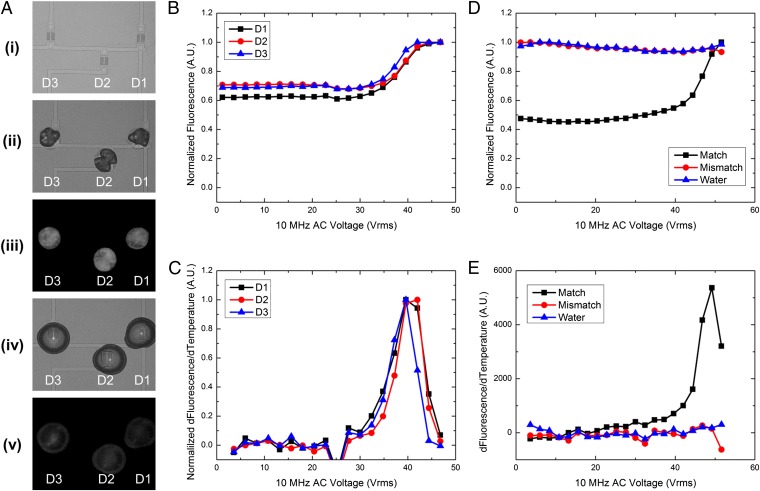Fig. 4.
Probe DNA dehydration with target DNA rehydration. (A) An example of the process flow is presented. A, i shows the devices before dehydration of the probe ssDNA. After spotting of the probe ssDNA (A, ii), the DNA in solution is allowed to dehydrate, leaving behind residual salts and DNA. A, iii shows a fluorescent image of the dried ssDNA spot. The fluorescence intensity is high without the presence of the FRET quencher. A, iv shows the rehydration of devices 1, 2, and 3. The initial fluorescence before denaturation is show in A, v. The fluorescence intensity is lower than A, iii due to the introduction of the FRET quencher and the DNA hybridization. (B and C) A melting curve of three spots that have been rehydrated with a complementary target sequence. The increase in fluorescence shows a distinct, single peak. (E) This implies that the DNA has hybridized properly without unwanted heterodimer or self-dimer formation. (D and E) A test for specificity in the process. Spots of a dried probe sequence were rehydrated with a complementary sequence, a noncomplementary sequence, or water. A distinct peak in the derivate in E implies a matching sequence.

